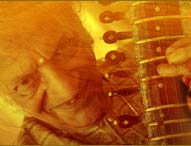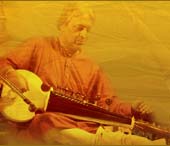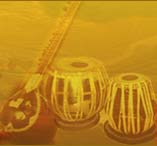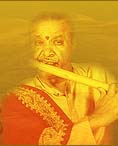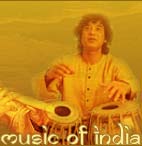Tabla is an Indian percussion instrument, which dates back to the times of Persian Muslims. Actually, Tabla forms a major instrument of Indian music. The instrument used to be the part of Classical and Hindustani music, but today is adding to the flavor of every kind of music, especially jazz. Beats of the Tabla drums can be heard notably in Indian music. The Tabla comprises of two drums, which possibly can be the reason for it to be known as Indian Drums. The drum that is kept on the right hand is called "dayan", while the left-hand drum is known as "bayan". Dayan is smaller than the left-hand drum and is generally made from solid piece of hardwood. The left-hand drum on the other hand is made from metal, terracotta or ceramic. The pitch of the Tabla mainly depends on the diameter of the drums, bigger the diameter, lower would be the pitch. The method of playing Tabla drum requires maximum exercise of the fingers and movements of palm. The synchronization of both drums produces various sound effects. The right hand drum "dayan" can itself make 12 different types of sounds.
History
The origin of table has been long debated. There have been many researchers trying to trace out the Tabla's roots. One of the many theories suggests that it might have come out as a hybrid form of other drums like 'Dholal', 'Naqqara' and others. Another claim of its origin is that it was invented by Amir Khusrau, a 13th century poet who was said to have split the mridangam drum into two. However, Indian musicians claim that Tabla is a recent addition to Indian musical instruments and was not present in ancient times but there are inscriptions found in many temples of India that have shown people playing drums. The theoreticians and researchers are yet to come to a conclusion on Tabla's origin but the fact remains that Indian music has a special touch to it due to Tabla and its rhythmic beats.
Types
Tabla has two parts to it: the 'bayan' and the 'dayan'. There are five star bayan table and five star dayan. The 'bayan' can make 2 different sounds, but on applying a little pressure to 'bayan', the pitch gets changed. The skin of the drum shells is fabricated from goat. The drum shell also bears a thick black disc, which is known as 'shiai'. The 'shiai' is prepared out of flour, ferric oxide powder and starch. It is fixed in the centre of the shell to allow the emanation of sounds. The tuning of Tabla is done by striking the 'guli' or 'ghittak' (wedge). For fine tuning, the braided part of the 'pagri' (head) is thumped by a metal hammer. To ensure consistency while playing, 'bida' or 'chutta' (cushion) is placed below both the drums.
Occasions
Tabla was originally associated with the music on which courtesans of various gharana's used to dance. Today, Tabla is played during most of the classical musicals and also in Tabla concerts. One of the major usages of Tabla is during dance performances. All major classical dances of India uses Tabla beats in their performances. Kathak is one such dance that uses Tabla's beat extensively.
Famous Tabla Players
Ustad Alla Rakha, Pandit Swapan Chaudhuri, Pandit Anindo Chatterjee Ghosh, Pandit Nayan Ghosh, Ustad Rashid Mustafa Thirakwa, Pandit Kishen Maharaj, Ustad Tari Khan, Pandit Kumar Bose, Pandit Sankha Chatterjee, Pandit Sharda Sahai and Ustad Tafo Khan are some of the famous Tabla players of India. Out of them Pandit Zakir Hussain is the most renowned as he attained international recognition and pushed Indian music to a higher pedestal worldwide.
